Béla Bartók Mikrokosmos, complete, 6 Books, sheet music

Béla Bartók and his music
Béla Viktor János Bartók (25 March 1881 – 26 September 1945) was a Hungarian composer, pianist, and ethnomusicologist. He is considered one of the most important composers of the 20th century; he and Franz Liszt are regarded as Hungary’s greatest composers.Through his collection and analytical study of folk music, he was one of the founders of comparative musicology, which later became ethnomusicology.
Best Sheet Music download from our Library.
Paul Wilson lists as the most prominent characteristics of Bartók’s music from late 1920s onwards the influence of the Carpathian basin and European art music, and his changing attitude toward (and use of) tonality, but without the use of the traditional harmonic functions associated with major and minor scales.
Although Bartók claimed in his writings that his music was always tonal, he rarely uses the chords or scales of tonality, and so the descriptive resources of tonal theory are of limited use. George Perle (1955) and Elliott Antokoletz (1984) focus on alternative methods of signaling tonal centers, via axes of inversional symmetry.
Others view Bartók’s axes of symmetry in terms of atonal analytic protocols. Richard Cohn (1988) argues that inversional symmetry is often a byproduct of another atonal procedure, the formation of chords from transpositionally related dyads. Atonal pitch-class theory also furnishes the resources for exploring polymodal chromaticism, projected sets, privileged patterns, and large set types used as source sets such as the equal tempered twelve tone aggregate, octatonic scale (and alpha chord), the diatonic and heptatonia secunda seven-note scales, and less often the whole tone scale and the primary pentatonic collection.
Please, subscribe to our Library.
If you are already a subscriber, please, check our NEW SCORES’ page every month for new sheet music. THANK YOU!
He rarely used the simple aggregate actively to shape musical structure, though there are notable examples such as the second theme from the first movement of his Second Violin Concerto, commenting that he “wanted to show Schoenberg that one can use all twelve tones and still remain tonal”. More thoroughly, in the first eight measures of the last movement of his Second Quartet, all notes gradually gather with the twelfth (G♭) sounding for the first time on the last beat of measure 8, marking the end of the first section.
The aggregate is partitioned in the opening of the Third String Quartet with C♯–D–D♯–E in the accompaniment (strings) while the remaining pitch classes are used in the melody (violin 1) and more often as 7–35 (diatonic or “white-key” collection) and 5–35 (pentatonic or “black-key” collection) such as in no. 6 of the Eight Improvisations. There, the primary theme is on the black keys in the left hand, while the right accompanies with triads from the white keys. In measures 50–51 in the third movement of the Fourth Quartet, the first violin and cello play black-key chords, while the second violin and viola play stepwise diatonic lines.
On the other hand, from as early as the Suite for piano, Op. 14 (1914), he occasionally employed a form of serialism based on compound interval cycles, some of which are maximally distributed, multi-aggregate cycles. Ernő Lendvai analyses Bartók’s works as being based on two opposing tonal systems, that of the acoustic scale and the axis system, as well as using the golden section as a structural principle.
Milton Babbitt, in his 1949 critique of Bartók’s string quartets, criticized Bartók for using tonality and non-tonal methods unique to each piece. Babbitt noted that “Bartók’s solution was a specific one, it cannot be duplicated”. Bartók’s use of “two organizational principles”—tonality for large scale relationships and the piece-specific method for moment to moment thematic elements—was a problem for Babbitt, who worried that the “highly attenuated tonality” requires extreme non-harmonic methods to create a feeling of closure.
The cataloguing of Bartók’s works is somewhat complex. Bartók assigned opus numbers to his works three times, the last of these series ending with the Sonata for Violin and Piano No. 1, Op. 21 in 1921. He ended this practice because of the difficulty of distinguishing between original works and ethnographic arrangements, and between major and minor works. Since his death, three attempts—two full and one partial—have been made at cataloguing.
The first, and still most widely used, is András Szőllősy‘s chronological Sz. numbers, from 1 to 121. Denijs Dille subsequently reorganised the juvenilia (Sz. 1–25) thematically, as DD numbers 1 to 77. The most recent catalogue is that of László Somfai; this is a chronological index with works identified by BB numbers 1 to 129, incorporating corrections based on the Béla Bartók Thematic Catalogue. On 1 January 2016, his works entered the public domain in the European Union.
Mikrokosmos
Béla Bartók‘s Mikrokosmos Sz. 107, BB 105 consists of 153 progressive piano pieces in six volumes written between 1926 and 1939. The individual pieces progress from very easy and simple beginner études to very difficult advanced technical displays, and are used in modern piano lessons and education. In total, according to Bartók, the piece “appears as a synthesis of all the musical and technical problems which were treated and in some cases only partially solved in the previous piano works.”
Volumes one and two are dedicated to his son Péter, while volumes five and six are intended as professionally performable concert pieces. Bartók also indicated that these pieces could also be played on other instruments; Huguette Dreyfus for example has recorded pieces from Books 3 through 6 on the harpsichord.
In 1940, shortly before they emigrated to the United States, he arranged seven of the pieces for two pianos, to provide additional repertoire for himself and his wife Ditta Pásztory-Bartók to play.
Volumes
All of the six volumes progress in difficulty, namely:
- Volumes I and II: Pieces 1–36 and 37–66, beginner level
- Volumes III and IV: Pieces 67–96 and 97–121, moderate to advanced level
- Volumes V and VI: 122–139 and 140–153, professional level
The list of pieces is as follows:
| Volume I Six Unison Melodies (I) (a) Six Unison Melodies (II) (b) Six Unison Melodies (II) Six Unison Melodies (III) Six Unison Melodies (IV) Six Unison Melodies (V) Six Unison Melodies (VI) Dotted Notes Repetition (1) Syncopation (I) With Alternate Hands Parallel Motion Reflection Change of Position Question and Answer Village Song Parallel Motion with Change of Position Contrary Motion Four Unison Melodies (I) Four Unison Melodies (II) Four Unison Melodies (III) Four Unison Melodies (IV) Imitation and Counterpoint Imitation and Inversion (I) Pastorale Imitation and Inversion (II) Repetition (II) Syncopation (II) Canon at the Octave Imitation Reflected Canon at the Lower Fifth Dance in Canon Form In Dorian Mode Slow Dance In Phrygian Mode Chorale Free Canon | Volume II In Lydian Mode Staccato and Legato (I) Staccato and Legato (Canon) In Yugoslav Style Melody with Accompaniment Accompaniment in Broken Triads (a) In Hungarian Style (for two pianos) (b) In Hungarian Style Contrary Motion (2) (for two pianos) Meditation Increasing-Diminishing County Fair In Mixolydian Mode Crescendo-Diminuendo Minuetto Waves Unison Divided In Transylvanian Style Chromatics Triplets in Lydian Mode (for two pianos) Melody in Tenths Accents In Oriental Style Major and Minor Canon with Sustained Notes Pentatonic Melody Minor Sixths in Parallel Motion Buzzing (a) Line against Point (b) Line against Point Dialogue (with voice) Melody Divided | Volume III Thirds against a Single Voice Hungarian Dance (for two pianos) Study in Chords Melody against Double Notes Thirds Dragons’ Dance Sixths and Triads (a) Hungarian Matchmaking Song (b) Hungarian Matchmaking Song (with voice) Triplets In Three Parts Little Study Five-Tone Scale Hommage à Johann Sebastian Bach Hommage à Robert Schumann Wandering Scherzo Melody with Interruptions Merriment Broken Chords Two Major Pentachords Variations Duet for Pipes In Four Parts (I) In Russian Style Chromatic Invention (I) Chromatic Invention (II) In Four Parts (II) Once Upon a Time… (a) Fox Song (b) Fox Song (with voice) Jolts |
| Volume IV Notturno Thumbs Under Hands Crossing In Folk Song Style Diminished Fifth Harmonics Minor and Major (a) Wandering through the Keys (b) Wandering through the Keys Game (with Two Five-Tone Scales) Children’s Song Melody in the Mist Wrestling From the Island of Bali And the Sounds Clash and Clang… Intermezzo Variations on a Folk Tune Bulgarian Rhythm (I) Theme and Inversion Bulgarian Rhythm (II) Song Bourrée Triplets in 9 8 Time Dance in 3 4 Time Triads Two-Part Study | Volume V Chords Together and in Opposition (a) Staccato and Legato (II) (b) Staccato and Legato (II) Staccato Boating Change of Time New Hungarian Folk Song (with voice) Stamping Dance Alternating Thirds Village Joke Fourths Major Seconds Broken and Together Syncopation (III) (a) Studies in Double Notes (b) Studies in Double Notes (c) Studies in Double Notes Perpetuum mobile Whole-Tone Scales Unison Bagpipe Music Merry Andrew |
Download it from our Library.
Volume VI
- Free Variations
- Subject and Reflection
- From the Diary of a Fly
- Divided Arpeggios
- Minor Seconds, Major Sevenths
- (a) Chromatic Invention (III)(b) Chromatic Invention (III)
- Ostinato
- March
- Six Dances in Bulgarian Rhythm (I)
- Six Dances in Bulgarian Rhythm (II)
- Six Dances in Bulgarian Rhythm (III)
- Six Dances in Bulgarian Rhythm (IV)
- Six Dances in Bulgarian Rhythm (V)
- Six Dances in Bulgarian Rhythm (VI)
Browse in the Library:
| Artist or Composer / Score name | Cover | List of Contents |
|---|---|---|
| William Best I Love You For Sentimental Reasons (Jazz Standard) | William Best I Love You For Sentimental Reasons (Jazz Standard) | |
| William Eveleth – Blues Jazz and Rock Riffs For Keyboards |
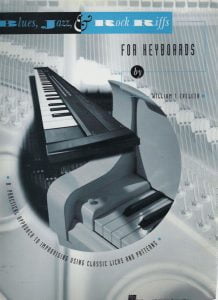 |
|
| William Gillock In Old Vienna Musescore File.mscz | ||
| William Gillock Valse Etude In Romantic Style Musescore File.mscz | ||
| William Joseph – Within (Songbook) (William Joseph) |
 |
William Joseph – Within (Songbook) (William Joseph) |
| William Robinson – My Girl | ||
| William Russo Composing Music A New Approach (ebook) |
 |
|
| Willie Dixon Preacher Of The Blues (2011) Mitsutoshi Inaba (Book) Biography |
 |
|
| Willie Fugal S Blues Piano transcription |
 |
|
| Willie Nelson – Always on My Mind Sheet Music |
 |
|
| Willie Nelson – On My Mind | ||
| Willie The Lion Smith – Finger Buster transcription |
 |
|
| Willie The Lion Smith Echo of Spring transcription |
 |
|
| Willow Weep For Me Words And Music By Ann Ronell 1932 Jazz Standard (Vintage sheet music) |
 |
|
| Wim Mertens – American Minimal Music La Monte Young Terry Riley Steve Reich Philip Glass |
 |
Book La Monte Young Terry Riley Steve Reich Philip Glass |
| Wim Mertens – Close Cover | Wim Mertens – Close Cover | |
| Wim Mertens – Struggle For Pleasure | Wim Mertens – Struggle For Pleasure | |
| Wim Mertens – Time Passing |
 |
|
| Wim Mertens Humility |
 |
|
| Wim Mertens Lir |
 |
|
| Windham Hill piano sampler |
 |
Windham Hill piano sampler |
| Windy Whistle (Le Renard et l’Enfant OST) Alice Lewis | ||
| Wings (McCartney) – Greatest Hits |
 |
Wings sheet music |
| Winifred Atwell Album Of Rags No 1 Original arrangements Vintage songbook |
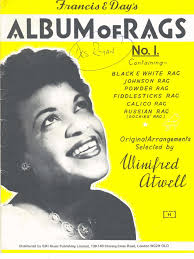 |
Winifred Atwell Album Of Rags No 1 Original arrangements Vintage songbook |
| Winifred Atwell Marguerite Monnot The Poor People Of Paris ( La Goualante Du Pauvre Jean) Piano Solo |
 |
|
| Winnie The Pooh The Honey Tree Sheet Music (Disney) |
 |
Winnie The Pooh The Honey Tree Sheet Music (Disney) |
| Winter Sonata O.S.T. (Ryu) | ||
| Winter Wonderland Other Christmas Favorites Songbook Piano Vocal guitar Chords |
 |
Winter Wonderland and Other Christmas Favorites Songbook Piano Vocal guitar Chords |
| Wish You Were Here – Pink Floyd (Musescore File).mscz | ||
| Within Temptation – Our Solemn Hour | ||
| Without you (Maria Carey) | ||
| Without You (Mariah Carey Piano Arr ) (Musescore File).mscz | ||
| Wiz Khalifa & Charlie Puth See You Again (Solo Piano) |
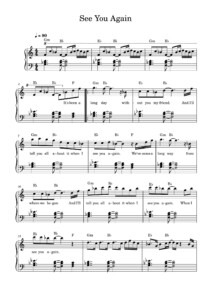 |
|
| Wolf Wagner Paraphrase Über Die Walküre |
 |
|
| Wolfe Richard Legit Professional Fake Book More Than 1010 Songs |
 |
Wolfe Richard Legit Professional Fake Book More Than 1010 Songs |
| Wolfenzon – Stücke für Klavier | Wolfenzon – Stücke für Klavier | |
| Womack, Bobby – Midnight Mover My Autobiography The True Story of the Greatest Soul Singer in the World (Book) |
 |
|
| Woman in love (Barbra Streisand) | ||
| Women Of Pop Rock Songbook Twenty-Two Hot Hits for Easy Piano |
 |
Women Of Pop Rock Songbook Twenty-Two Hot Hits for Easy Piano |
| Wonderful Christmastime -Paul Mccartney (Wings) (Musescore File).mscz | ||
| Wonderful Life – Black (Easy Piano Solo Sheet Music) (Musescore File).mscz | ||
| Woody Allen – A propósito de nada (autobiografía)(2020) |
 |
|
| Woody Allen – Apropos of Nothing (2020) Autobiography | Woody Allen – Apropos of Nothing-Simon and Schuster (2020) Cover | |
| Woody Guthrie This Land Is Your Land (Easy and Intermediate Piano Solo) |
 |
|
| World Hits Of Jazz Standard |
 |
World Hits Of Jazz Standard |
| Wuthering Heights (Ryuichi Sakamoto) | ||
| Wynton Kelly – Autumn Leaves Solo transcription | Wynton Kelly – Autumn Leaves Solo transcription | |
| Wynton Kelly – Dark Eyes Solo Piano transcription |
 |
|
| Wynton Kelly – Dark Eyes Solo Piano Transcription (Musescore File).mscz | ||
| Wynton Kelly – Full transcriptions | Wynton Kelly – Full transcriptions | |
| Wynton Kelly – I Dig of You Solo transcription |
 |
|
| Wynton Kelly – If I should Love You Solo transcription |
 |
|
| Wynton Kelly – Jazz Piano Collection |
 |
Wynton Kelly Piano Collection- |
| Wynton Kelly – Someday my prince will come (Piano solo) |
 |
|
| Wynton Marsalis Trumpet Genius Gourse, Leslie (Book) |
 |
|
| Wynton Marsalis – Caravan (Solo) |
 |
|
| Wynton Marsalis – Darn That Dream (Solo) | Wynton Marsalis – Darn That Dream (Solo) | |
| Wynton Marsalis – Dealfayos Dillema (Solo) |
 |
|
| Wynton Marsalis – Standards (sheet music transcriptions) |
 |
Wynton Marsales – Standards (sheet music transcriptions) |
| Wynton Marsalis In The Court Of King Oliver (Trumpet and rhythm section) |
 |
|
| Wynton Marsalis Omnibook For B Flat Instruments Transcribed exactly from his recorded solos |
 |
Wynton Marsalis Omnibook For B Flat Instruments Transcribed exactly from his recorded solos |
| Wynton Marsalis Struttin’ With Some Barbeque (Live) Wynton Marsalis’ Trumpet Solo |
 |
|
| Xenoblade Chronicles 2 Loneliness Kenji Hiramatsu | Xenoblade Chronicles Opening Theme Game sheet music | |
| Xenoblade Chronicles Opening Theme Game sheet music Yoko Shimomura |
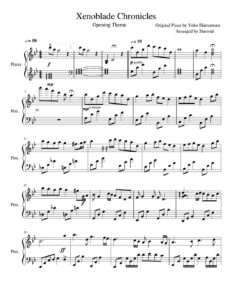 |
|
| Yamaha E443 Songbook digital keyboard PSR-E443 |
 |
|
| Yamaha Keyboard Songbook |
 |
Yamaha Keyboard Songbook |
| Yamaha Keyboard Songbook Song-Buch |
 |
|
| Yamaha PSR E373 YPT-370 PSR-EW310 Song book |
 |
|
| Yamaha Song Book |
 |
Yamaha Song Book |
| Yamaha Song book |
 |
Yamaha Songbook |
| Yamaha Songbook |
 |
Yamaha-Songbook |
| Yamaha songbook 50 Piano Greats for the piano (Yamaha collection) |
 |
50 Piano Greats for the piano (Yamaha collection) |
| Yamaha Songbook Contemporary Vol. 1 |
 |
Yamaha Songbook Contemporary Vol. 1 |
| Yana Bobalik Mysterious Music Я.Бобалік Songbook |
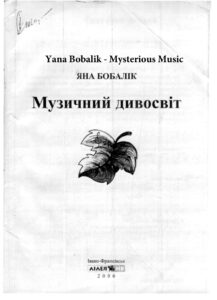 |
|
| Yana Bobalik Secret Music From Mysterious Music Я.Бобалік Таемна Музыка |
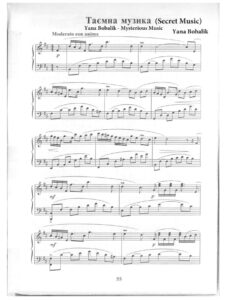 |
|
| Yann Tiersen Rue des Cascades (sheet music) | yann tiersen cascades sheet-music | |
| Yann Tiersen Mother’s Journey |
 |
|
| Yann Tiersen – Tabarly Sheet Music |
 |
|
| Yann Tiersen – Comptine Dun Autre ete | ||
| Yann Tiersen – La Dispute – Amelie Poulain | ||
| Yann Tiersen – La Valse d’Amelie Poulain | Yann Tiersen – La Valse Damelie | |
| Yann Tiersen – Le moulin – Amelie Poulain | Le Moulin – Amelie Poulain | |
| Yann Tiersen – Six pièces pour piano – Volume 2 – Amélie Poulain |
 |
Yann Tiersen – Six pieces pour piano – Volume 2 – Music Sheet |
| Yann Tiersen – Summer 78 | ||
| Yann Tiersen – Sur Le Fil |
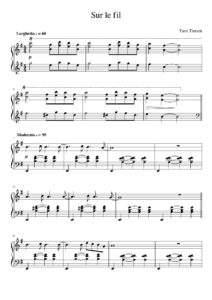 |
|
| Yann Tiersen – Pièces pour piano vol 1 et 2 + divers |
 |
Yann Tiersen – pièces pour piano vol 1 et 2 + divers  |
| Yann Tiersen Eusa 2015 Songbook |
 |
|
| Yann Tiersen J’Y Suis Jamais Alle piano solo (Amélie) |
 |
|
| Yann Tiersen Onze Pièces Pour Piano |
 |
Yann Tiersen Onze Pièces Pour Piano |
| Yann Tiersen Partitions intégrales Piano Works 1993-2004 | Yann Tiersen Partitions intégrales Piano Works 1993-2004 | |
| Yann Tiersen Tabarly Complete Book For Piano |
 |
|
| Yanni In My Time (Piano Solos) Sheet Music |
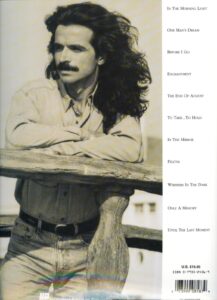 |
Yanni In my time piano solos |
| Yanni One Man’s Dream |
 |
|
| Yanni – Per Piano (Piano book) |
 |
Yanni – Per Piano |
| Yanni – In The Morning Light | ||
| Yanni – Nostalgia | ||
| Yanni – One Man’s Dream (Musescore File).mscz | ||
| Yanni -The Best of |
 |
 |
| Yanni Ethnicity Book |
 |
Yanni Ethnicity Book |
| Yaron Herman – Hallelujah (Leonard Cohen) transcription |
 |
|
| Yashal (Elisa) | ||
| Yasuharu Takanashi – Naruto Shippuden OST – Loneliness |
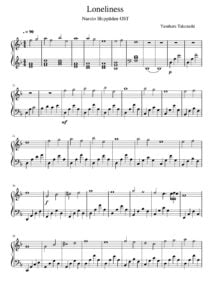 |
|
| Yedidia, Ronn Piano Sonata No 3 outcries (manuscrit) |
 |
|
| Yehezkel Raz Ballerina Piano Solo sheet music |
 |
|
| YES Fragile |
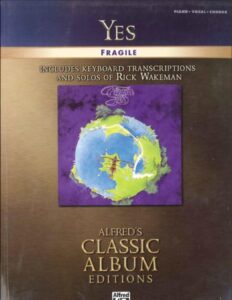 |
YES Fragile |
| YES – Complete Deluxe Edition |
 |
YES – Complete Deluxe Edition |
| Yes Close To The Edge The Story Of Yes (Book) |
 |
|
| Yes The Best Of Guitar Songbook with TABs |
 |
Yes The Best Of Guitar Songbook |
| Yesterday Piano Cello – Piano Sheet Music – Paul McCartney |
 |
|
| Yesterday Piano vocal guitar Songbook Featuring Music From the OST |
 |
|
| Yesterday The Beatles For Jazz Piano (Musescore File).mscz | ||
| Yesterday when I was young (Charles Aznavour) | ||
| Yimkin Law ( Et maintenant on va où OST) Racha Rizk | ||
| Yiruma – 27 May | ||
| Yiruma – Destiny Of Love | ||
| Yiruma – Dream | ||
| Yiruma – Dream A Little Dream Of Me | Yiruma – Dream A Little Dream Of Me | |
| Yiruma – Falling | ||
| Yiruma – First Love – River Flows In You | Yiruma – First Love – River Flows In You | |
| Yiruma – Gabriel |
